
Is your Windows time always wrong, or does it keep changing? It may be a case of a manipulated system clock, meaning a virus or malware could be hiding on your computer.
When malicious software infects your PC, it can alter your system settings, causing unexpected activity. A malware infection can damage your computer and let cybercriminals steal sensitive data, banking details and online identity. The wrong time on your computer may be the first sign of an attack.
However, there are other reasons why your PC clock is wrong. This includes a hardware failure like a dead CMOS battery or Windows time being out of sync.
If you notice your computer clock on Windows is wrong, this guide will help you fix the wrong time and show you the best way to detect and remove a virus or malware using the best antivirus software.
Windows time is wrong or keeps changing: Quick fixes
To fix a manipulated system clock on Windows and get your time back to normal, follow the steps below in order.
It’s important to note that changing your time may only be a temporary fix. Even if you successfully get your computer time back to normal, malware could still be hiding on your device – and you’ll be back to square one.
-
Sync your system clock
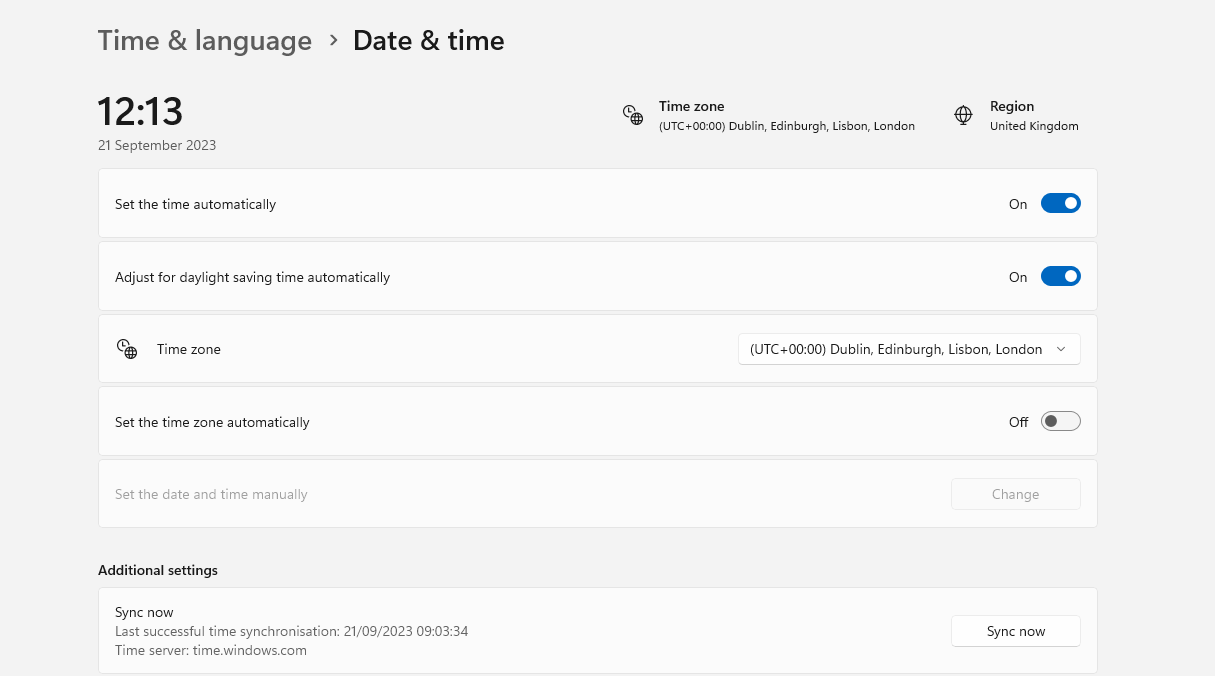
When your computer shows the wrong time, especially by a few hours, Windows time could be set in the wrong time zone or failed its time synchronisation.
To fix this, you’ll need to head into your system clock’s settings. Right-click the system clock on your System Tray and select Adjust date and time. In Time zone, see if your time is set to the correct time zone. You can click the drop-down menu to adjust the location. If this isn’t available, turn off Set the time zone automatically.
To make sure your Windows time stays accurate, turn on Set the time automatically and Adjust for daylight saving time automatically. Next, click Sync now to ensure Windows is up to date with its time.
-
Change system clock in BIOS or UEFI settings
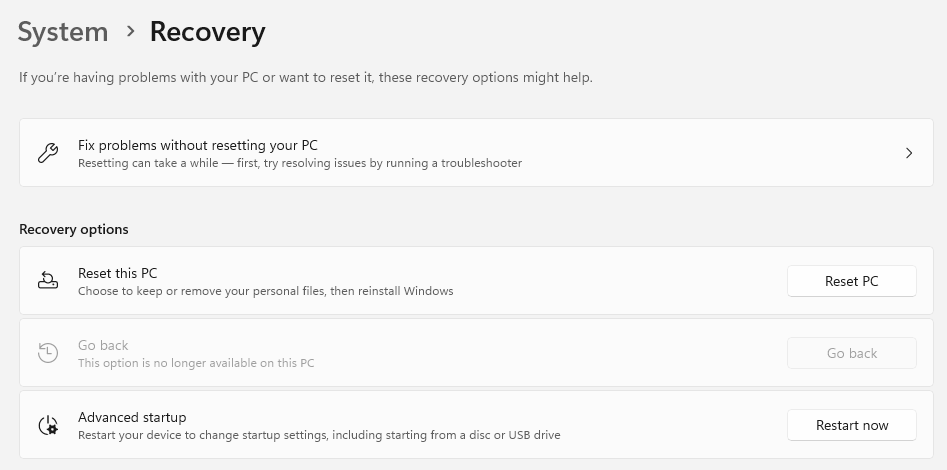
Sometimes, a wrong or changing computer clock may not be a Windows issue but rather a problem with your hardware.
If the time on your device’s motherboard is wrong, it can confuse the system and always show the wrong time. This is when you need to go to BIOS/UEFI to fix it.
Depending on your device, the time or clock settings could be located differently in the BIOS settings. For example, open Settings > System > Recovery > Advanced startup to get there. Click Restart now to enter the BIOS/UEFI of your device and locate Time or Clock settings. If the time is wrong, adjust it to the correct time based on your location.
You can locate your BIOS/UEFI settings by searching for your PC’s name and BIOS setting online. Once done, Try step one again to see if this fixes the issue.
-
Update your software and restart your computer
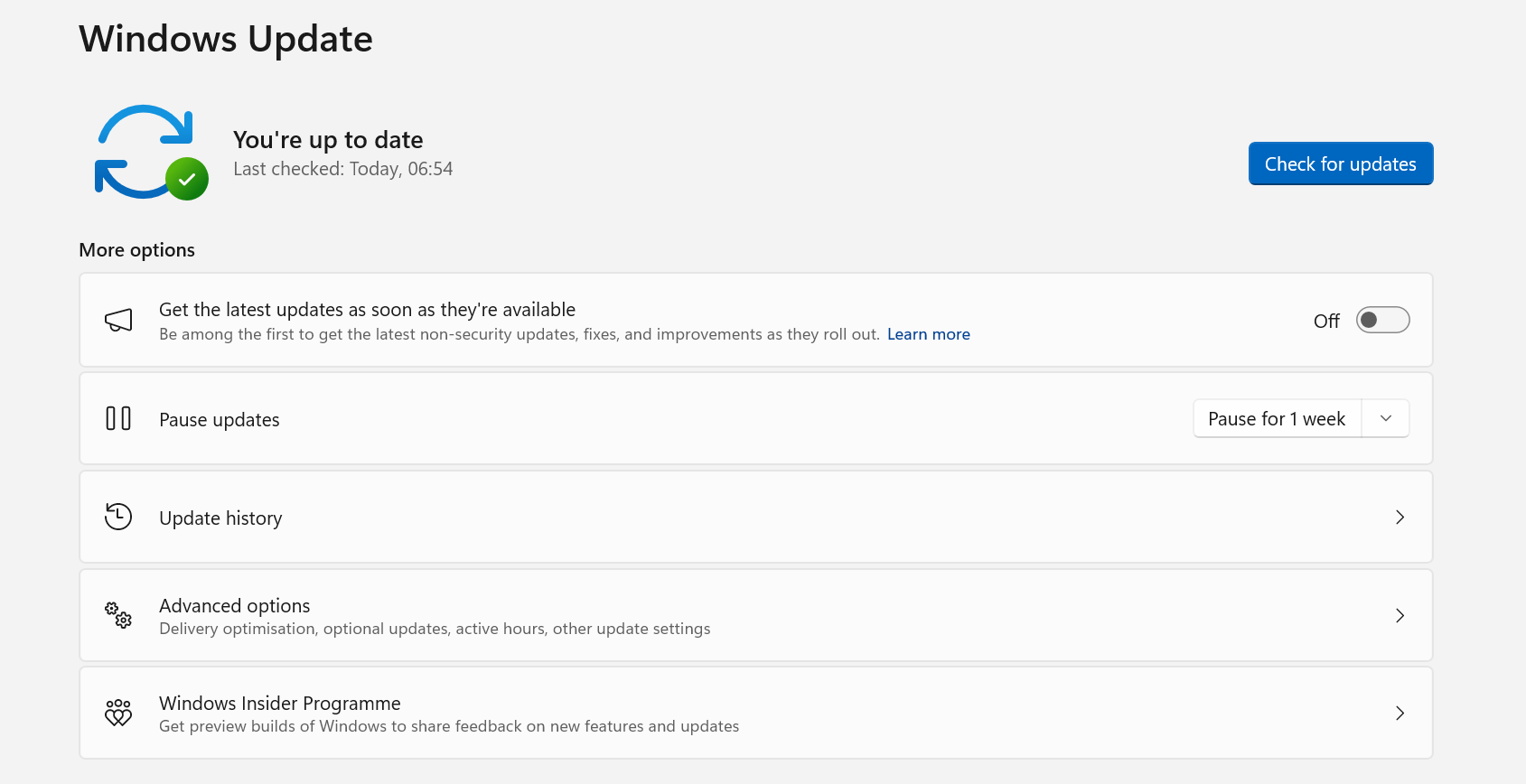
Updating your Windows PC software and restarting your computer can often fix minor glitches, including changes to your Windows time. However, they can also fend off malicious software.
Cybercriminals take advantage of security vulnerabilities on your device. These zero-day vulnerabilities allow threat actors to exploit computer systems until developers mitigate them, which can cause major damage.
Updating your system’s software can resolve the issue. A software update often contains security patches that help protect your device, as developers work to protect users from known zero-day attacks and other forms of malware trying to infect your device.
You can update your device through its settings. For example, you can update your Windows PC by navigating to Start > Settings > Windows Update > Check for updates. If there are any, download and install the update.
-
Change your passwords
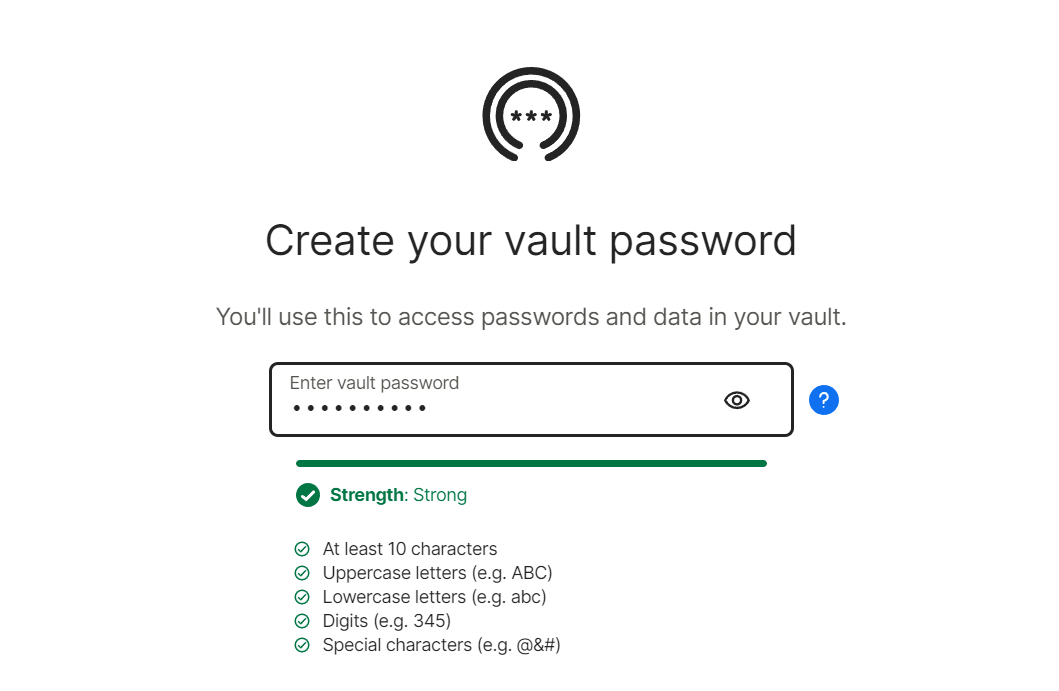
If you’ve experienced a change in your system clock and nothing will fix it, chances are your PC has been infected with a virus or malware, and your online accounts and devices are at risk of being compromised.
To help mitigate potential malware threats or hackers taking control of your accounts, change your passwords and use a strong password to stop suspicious activity.
Using password managers such as LastPass or 1Password can help manage all your passwords in one place, create a complex, near-unbreakable master password and encrypt your information.
Changing passwords will stop hackers from trying to steal any sensitive information and your online accounts.
-
Use antivirus software to detect and stop malware
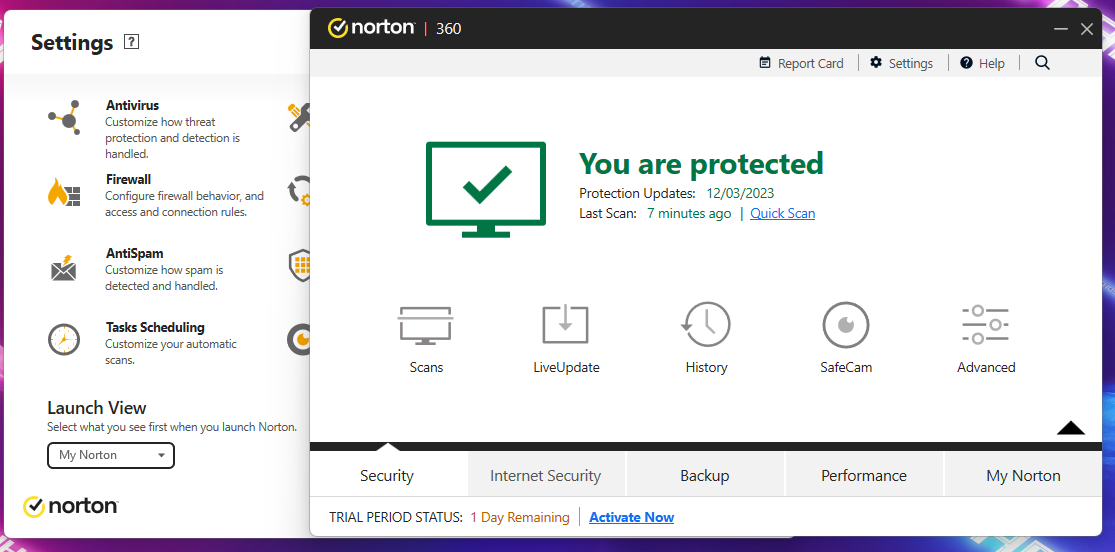
If you can’t find any way to solve changes to your Windows time, using one of the best antivirus software like Norton 360 (from $19.99/year) will keep you safe from any malicious software, like ransomware, adware, spyware, phishing and more.
That’s not all; antivirus software can provide extra features like VPNs, cloud storage, PC boosters and more. Norton 360 has all these features and extra security tools that can backup your data, prevent online identity theft and stop malware.
What’s more, Norton 360 comes with monitoring features to identify all suspicious activity on your device. It will help detect and notify you about any unusual activity, including changes to your Windows time, and stop it using it’s protection tools.
Check out our Norton 360 review and Norton 360 Platinum review to see which antivirus package suits you best.
Why did my Windows clock change?
Several things can cause a manipulated system clock on Windows; some are easier to fix than others.
For example, a bug or minor glitch in Windows could have changed your system clock out of the blue, or your time may not be set to the right time zone after travelling abroad. Fixing this requires a simple change in the Time and Date settings.
However, another problem could be at a hardware level. A worn-out CMOS (Complementary Metal Oxide Semiconductor) chip, which stores system configuration information like date and time, could be causing a change in time. If the battery is dying, it will need to be changed. Don’t fret; it’s easy to change and cheap to replace. However, you’ll need to open your computer’s case to see what type of battery it needs.
The most dangerous issue is if a virus or malware infection has manipulated the system clock or changed the time, intentionally or unintentionally. If you notice your computer time has been altered without your permission, malware may have infected your computer.
Malware can sneak onto your device through a number of ways, including mistakenly clicking a suspicious link in an email or going to a dodgy website. Once it does, it can make changes to your device, including a change in Windows time.
To identify and remove malicious software and prevent infections from happening, it’s best to use an antivirus like Norton 360 to detect any malicious activity and stop the malware from causing more harm.

How do I get my computer clock back to normal?
Depending on the problem, getting your computer clock on Windows back to normal if it’s set wrong can be easy.
It can be fixed by simply restarting your PC or syncing the system clock to the right time zone. It could also mean heading into the BIOS to set your system clock to the right time.
However, if it keeps changing to a random time, that’s when you’ll need to perform a system scan using a reliable antivirus to detect any malicious activity taking place on your device. A reliable antivirus will identify any threat and get rid of it. Once it’s done, you can head into settings to set your Windows clock to the correct time.
Can any antivirus software stop viruses and malware?
The best antivirus software will stop malware in its tracks. Not all antivirus software is equal, as some don’t have high malware detection and protection rates or have accredited lab scores to back them up.
However, many high-standard AV protections offer near-perfect scores when detecting and protecting against malware, meaning even complex malicious software can’t go unnoticed. Even if it’s a malicious file that changes your computer time, an antivirus will be able to find it out and get rid of it.
Services, including Norton 360 (from $19.99/year) and Bitdefender (from $19.99/year), include device monitoring features to help uncover suspicious activity early and offer the tools to fight off cyberattacks. Whether its a phishing attack, ransomware, spyware or infostealer malware, these security products have the tools to protect you.
These services have protection features that block malicious activity on your device. To make sure your device is ready to identify and block malware damaging your system, set yourself up with an antivirus.
Best antivirus to prevent viruses and malware
1. Norton 360 🥇From $19.99/year
Best overall antivirus of 2023
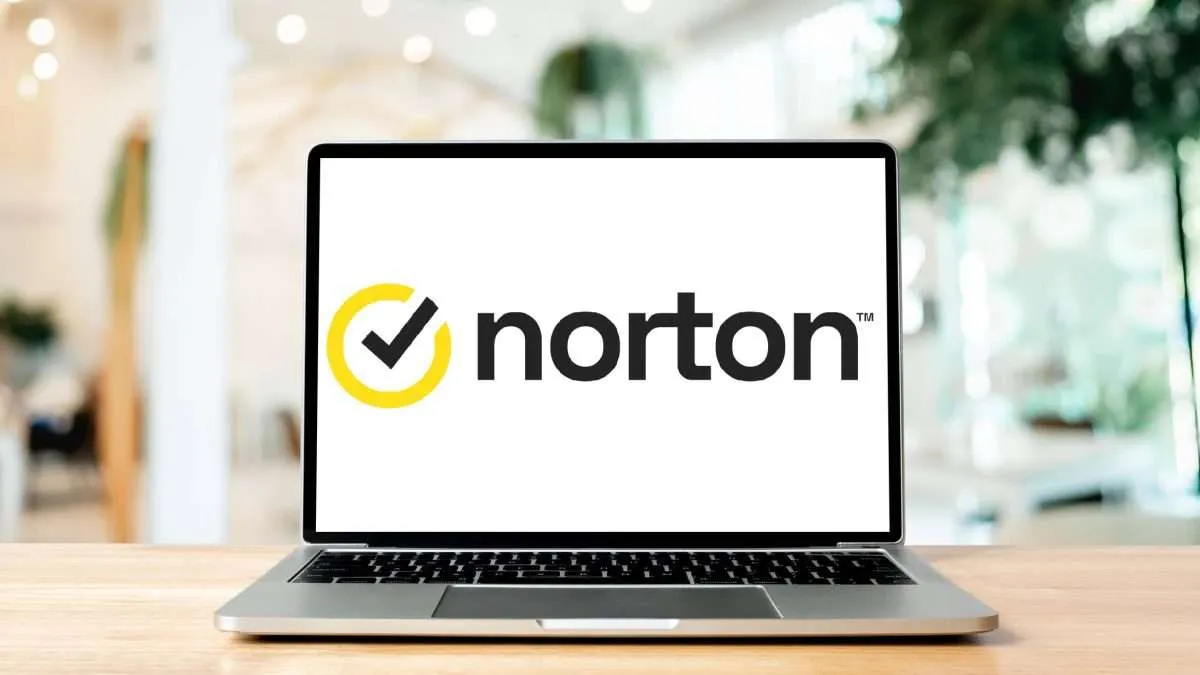
“Norton” and “antivirus” are synonymous these days, as the well-established cybersecurity brand has successfully fought against malware, viruses and nasty software threats since 1990.
Norton 360 offers excellent antivirus protection and extra features that make for a valuable, all-in-one security product. Its Norton 360 Deluxe and Premium package may cost a pretty penny. Still, with security across multiple platforms, a full-blown VPN, Dark Web Monitoring, Parental Controls and more, it will have a household free of cyber threats.
Norton’s certainty of its antivirus software’s capabilities is clearly defined by the brand’s 100% Virus Protection Promise. If a device protected by Norton 360 can’t get rid of a virus, the user receives their money back. It’s a big claim, but unquestionably, no one should expect to get that refund.
If you have the money for it, you can also check out the premium Norton 360 Platinum package for even more online protection, including from identity theft. Without a doubt one of the best antivirus to get.
Read our full Norton 360 review
Special Offer!
2. Bitdefender 🥈 From $19.99/year
Best security features and tools

Bitdefender takes the spot as best antivirus, and for good reason. It’s not enough that it boasts near-perfect lab test scores across the board, as it goes the extra mile by giving users access to a plethora of advanced security features.
Bitdefender goes above and beyond in the features department, all while keeping known malware, ransomware, and viruses at bay. It will defend your device against new attacks, provide security for online transactions, keep you safe with a reliable VPN, and protect your accounts with a password manager.
It’s a no-brainer when it comes to defending your devices against virtually any form of cyberattack, and its top-notch protection extends to its most affordable package, too. Protecting your PC and smartphone, from Windows and macOS to iOS and Android, is becoming even more necessary, and Bitdefender is the tricked-out shield you need.
Read our full Bitdefender review
Special Offer!
3. Malwarebytes 🥉 From $44.99/year
Best antivirus for Windows PC
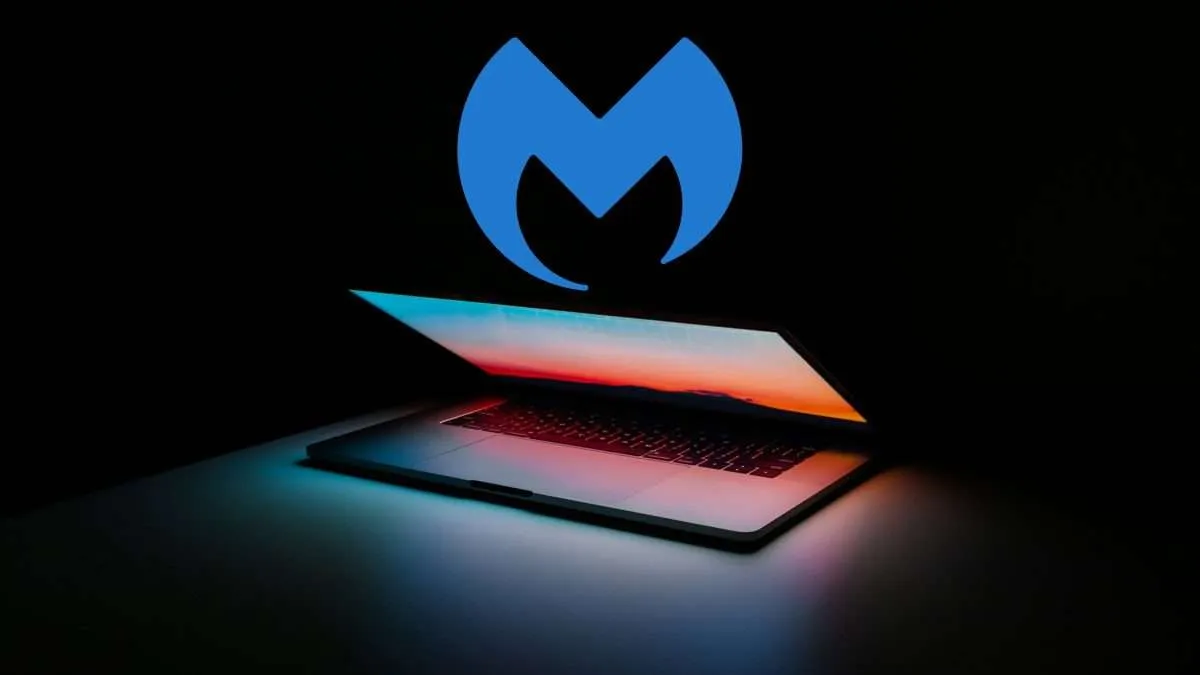
Hundreds of malware emerge every minute, and it’s Malwarebytes’ mission to detect and conquer them all. Does the antivirus do this successfully? Yes, but there’s wiggle room for improvements.
Malwarebytes’ no-nonsense approach to protecting your devices from the onslaught of malware and viruses is effective for those who need a reliable antivirus that will detect and remove malicious software, especially with its free version. However, while its premium service provides 24/7 real-time detection, conveniently blocks vicious ransomware and shields users from malicious websites, it doesn’t go beyond on the feature front.
That’s no bad thing, as sometimes a user only needs a powerful antivirus to keep them safe from cyber threats. But considering its competitors add a few more security tools, such as data breach monitoring and a firewall, there’s room for improvement.
Read our full Malwarebytes review
Special Offer!
4. Avast One 🙌 From $39.99/year
Best antivirus for beginners + free plan available!

With Avast One, you can protect your device from viruses, malware and ransomware for free. That’s right, and you don’t have to pay a dime for the extra security features the antivirus throws in, including its VPN, firewall and more.
Avast One will safeguard your device from malware, comes with ransomware protection, blocks harmful websites and downloads from the web, scans your emails for malicious attachments, stops hackers from infiltrating your device through Wi-Fi with a firewall – the list goes on. That’s a lot of tools for software that’s free, and the included VPN and the ability to speed up your PC are a welcome bonus.
It’s the ideal antivirus software for home use, as it takes the hassle out of staying wary of cyber threats lurking around, even if you’re not a tech whizz. What’s more, if you are looking for added precautions, its paid Individual and Family packages still boast great value. Hard to go wrong with this best antivirus.
Read our full Avast One review
Special Offer!
5. AVG👍 From 4.99/month
Best antivirus for + free plan available!

You can never go wrong with free antivirus protection, but some deliver even better detection and protection rates, along with extra security features, without costing a dime. This is where AVG antivirus shines.
AVG provides reliable protection and only a small impact on performance for Windows, Mac, iOS and Android. It safeguards your devices against malware, viruses and zero-day exploits, along with blocking malicious links and attachments in emails. Throw in phishing protection when surfing the internet and extra security features such as its SafePrice browser extension and Network Inspector, and you’ve got yourself a do-it-all antivirus.
Sure, you can find all of these perks with Avast, but if you like a slick, darker user interface that’s easy to navigate, then AVG is for you.
